FACS NEWSLETTER
Nanotechnology Program in Taiwan
发布时间:2016年05月06日 来源:中国化学会
Chung-Yuan Mou
Department of Chemistry, National Taiwan University
Taipei, Taiwan 106
Introduction
In this paper, the Initiatives in Nanoscience and Technology of Taiwan is described. Based on the decree of establishing "National Science and Technology Program" in the final report of the Fifth Science and Technology Congress, the National Science Council (NSC) proposed "National Science and Technology Program for Nanoscience and Nanotechnology" in August, 2002. The Steering Committee appointed Prof. Maw-Kuen Wu(Director of the Institute of Physics, Academia Sinica) and Dr. Jih-hang Yang(Vice President of ITRI) as the executive directors of this national program.
This program coordinates the research efforts from various government agency to achieve objectives for nanotechnology development. The programs are mainly through the establishment of common core facilities, education programs to enhance man power, promoting industrial applications, and to bring up the academic excellence, and create innovations in nanotechnology. We also establish international competitive nanotechnology platforms, and enhance advanced innovative research to speed up the commercialization of nanotechnology.
Approaches
Taiwan's nanotechnology project are addressed within four main themes. The first theme is academic excellence program. This objective mainly focus on six areas of fundamental understanding, including:
- basics research on the physical, chemical and biological properties of nanostructures;
- synthesis, assembly and processing of nanomaterials, research;
- development of probes and manipulation techniques;
- design and fabrication of interconnects, interfaces and system of functional nanodevices;
- development of MEMS/NEMS technology;
- nano-biotechnology.
We also enhance the university-industry laboratory partnerships and promote international collaboration.
The second theme is industrialization program includes nanomaterials and processing techniques, nanoelectronics, nanomaterials and devices for flat-panel display, optical communication, nano packaging technology, data storage, nano technology for energy applications, nanomaterials application for traditional industries, and biotechnology. That may be rapidly commercialized.
The third theme, core facilities program will be available for academics and researchers from industry on request. We set up common laboratories in areas such as characterization and processing laboratory, nanomaterials simulation laboratory, and nanomaterials synthesis and production laboratory. We also plan to set up electronics-networking system, and sponsor programs for innovative news tools design and manufacture.
The fourth theme is education program, we establish interdisciplinary nanoscience and technology curricula, enhance basic science knowledge (from high school up), promote international collaboration and personnel exchange, recruit talents from abroad, and promote academic-industry collaborating research and personnel exchange.
Organization of Funding
National Nanotechnology Program is a six-year program, with total funding of US $633.8 million. The funding agencies include Ministry of Economic Affairs (MOEA), National Science Council (NSC), Ministry of Education, Atomic Energy Council, Environmental Protection Department, and Department of Health. Table 1 presents Budgets for National Nanotechnology Program from FY 2003 to FY 2008.
Table1 Budget for National Nanotechnology Program from FY 2003 to FY 2008 in Taiwan
|
Organizations |
2003 | 2004 | 2005 | 2006 | 2007 | 2008 | Total |
| Department of Industrial Technology, MOEA | 54.57 | 66.91 | 74.26 | 77.50 | 83.24 | 89.06 | 445.54 |
| Industry Development Bureau, MOEA | 0.58 | 0.74 | 2.06 | 2.94 | 3.53 | 4.24 | 14.08 |
| Energy Commission, MOEA | 0.88 | 1.18 | 1.18 | 1.18 | 1.18 | 1.18 | 6.76 |
| Bureau of Standards, Metrology and Inspection, MOEA | 0.91 | 1.21 | 1.33 | 1.46 | 1.61 | 1.77 | 8.29 |
| NSC | 18.04 | 20.00 | 20.88 | 22.35 | 22.35 | 24.06 | 127.69 |
| Ministry of Education | 0.64 | 1.47 | 1.47 | 1.47 | 1.47 | 1.47 | 8.00 |
| Atomic Energy Council | 0.58 | 1.18 | 1.76 | 1.76 | 1.76 | 1.94 | 8.99 |
| Environmental Protection Department | 0.19 | 0.24 | 0.24 | 0.24 | 0.24 | 0.24 | 1.36 |
| Department of Health | - | 1.32 | 1.59 | 1.91 | 2.29 | 2.74 | 9.85 |
| Program Office (NSC) | 0.53 | 0.53 | 0.53 | 0.53 | 0.53 | 0.53 | 3.18 |
|
Total |
76.91 | 94.77 | 105.30 | 111.34 | 118.19 | 127.22 | 633.75 |
Unit: Million US dollars
Highlights of Recent Researches in Nanotechnology
During the year of 2002, there are many exciting research results. Here we report those from academic institutes that are related to chemistry.
1. Selective Binding of Mannose Encapsulated Gold Nanoparticles to Type 1 Pili in Escherichia Coli
Prof. Chia-Chun Chen(National Taiwan Normal University) and his team reported the preparation of mannose encapsulated gold nanoparticles using self-assembly. The nanoparticles are used as a probe to demonstrate their selective binding to the mannose adhesion on type 1 pili of E. coli. The new materials allow one to directly and conveniently identify precious locations of protein receptors.

2. Nanoparticles Fabricated Single Electron Transistor and Light Emitting Diode
From the laboratory of Prof. W.F. Lin(National Taiwan University) and coworkers, single electron transistors and memory cells with Au nanoparticles linked by C60 derivatives have been fabricated by hybridization of top-down advanced electron-beam lithography and bottom-up nanophased-material synthesis techniques. Low temperature transport measurement exhibit clear Colulomb-blockade-type current-voltage characteristics and hysteretic-type gate-modulated current. The hysteresis is attributed to the presence of electrically isolated charge-storage Au nanoparticles.
3. Light emitting diodes with near-lasing action were fabricated with the insertion of SiO2 nanoparticles in the oxide layer of metal-oxide silicon (MOS) structure. The threshold current is ~12mA. The SiO2 nanoparticles cause simultaneous localization of electrons and holes to enhance phonon-assisted radiative recombination. Electroluminescence at Si bandgap energy is increased to orders of magnitude larger than in similar MOS structures without SiO2 nanoparticles.
Single Electron Transistors and Memory Cells (Appl. Phys. Lett. 2002)

4. Mesoporous Materials
From the laboratory of Prof. Chung-Yuan Mou(National Taiwan University), nanoporous silica materials are synthesized in various morphologies as single crystals thin film(with vertical channels) and tubular. The pore size, surface functionalization can be controlled to be used as nanoreactors. Complex reactions are performed inside the nanochannels of MCM-41.The chemistry in confined space is developed with the mesoporous materials as hosts. The advantages include:
|
 |
5. One-Dimensional Nanomaterials Synthesis, Characterization & Functionalization
Under the leadership of Prof. K.H. Chen (Academia Sinica), various one dimensional nanomaterials are synthesized. These include carbon nanotube, nanowires of Galium Nitride and gold nanorods. Applications include field emission display(CNT and SiC), and sensors for biomolecules.
|
|
|
|
|
|
6. From Metal String Complexes To Metal Wires
Professor Shie-Ming Peng's (National Taiwan University) efforts to extend the metal number from dinuclear metal complexes to linear oligonuclear metal complexes with all-syn form of oligo-(α-pyridyl)amido ligands are successful. Their structures and magnetic behaviors for various metal complexes with specific metal numbers are studied. Self-assembled monolayers of n-alkanethiols are employed as a two dimensional matrix to isolate the metal string complexes [MnL4(NCS)2], which exhibit protrusions under the measurements of scanning tunneling microscopy (STM) imaging. The differences in the metal-metal interactions between the neutral and cationic oxidation complexes might shed light on the pplication of these complexes as "molecular switches".

Acknowledgements:
The materials contained here were collected from the program office of the National Science and Nanotechnology program of Taiwan.





